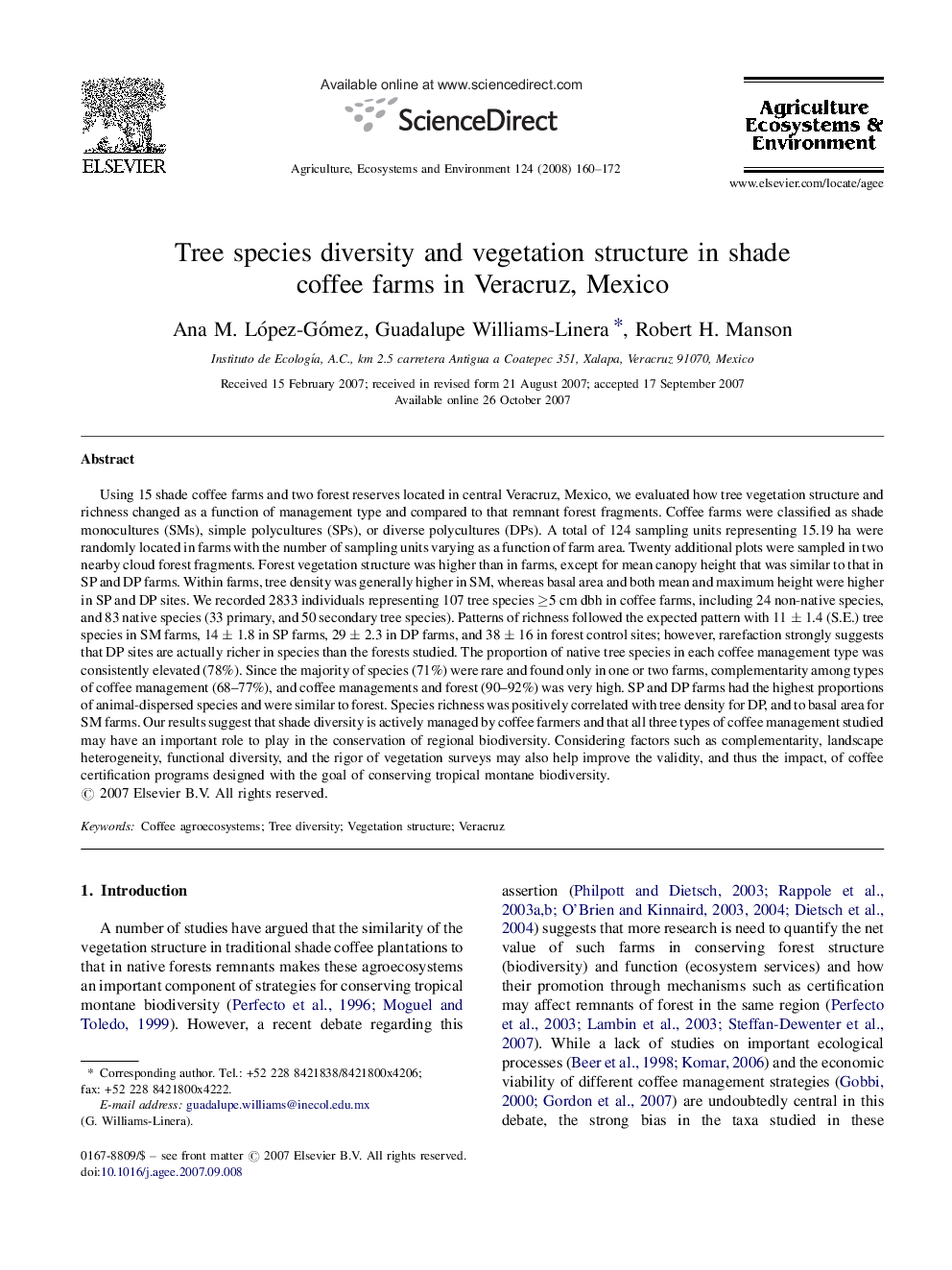| Article ID | Journal | Published Year | Pages | File Type |
|---|---|---|---|---|
| 2415445 | Agriculture, Ecosystems & Environment | 2008 | 13 Pages |
Using 15 shade coffee farms and two forest reserves located in central Veracruz, Mexico, we evaluated how tree vegetation structure and richness changed as a function of management type and compared to that remnant forest fragments. Coffee farms were classified as shade monocultures (SMs), simple polycultures (SPs), or diverse polycultures (DPs). A total of 124 sampling units representing 15.19 ha were randomly located in farms with the number of sampling units varying as a function of farm area. Twenty additional plots were sampled in two nearby cloud forest fragments. Forest vegetation structure was higher than in farms, except for mean canopy height that was similar to that in SP and DP farms. Within farms, tree density was generally higher in SM, whereas basal area and both mean and maximum height were higher in SP and DP sites. We recorded 2833 individuals representing 107 tree species ≥5 cm dbh in coffee farms, including 24 non-native species, and 83 native species (33 primary, and 50 secondary tree species). Patterns of richness followed the expected pattern with 11 ± 1.4 (S.E.) tree species in SM farms, 14 ± 1.8 in SP farms, 29 ± 2.3 in DP farms, and 38 ± 16 in forest control sites; however, rarefaction strongly suggests that DP sites are actually richer in species than the forests studied. The proportion of native tree species in each coffee management type was consistently elevated (78%). Since the majority of species (71%) were rare and found only in one or two farms, complementarity among types of coffee management (68–77%), and coffee managements and forest (90–92%) was very high. SP and DP farms had the highest proportions of animal-dispersed species and were similar to forest. Species richness was positively correlated with tree density for DP, and to basal area for SM farms. Our results suggest that shade diversity is actively managed by coffee farmers and that all three types of coffee management studied may have an important role to play in the conservation of regional biodiversity. Considering factors such as complementarity, landscape heterogeneity, functional diversity, and the rigor of vegetation surveys may also help improve the validity, and thus the impact, of coffee certification programs designed with the goal of conserving tropical montane biodiversity.
